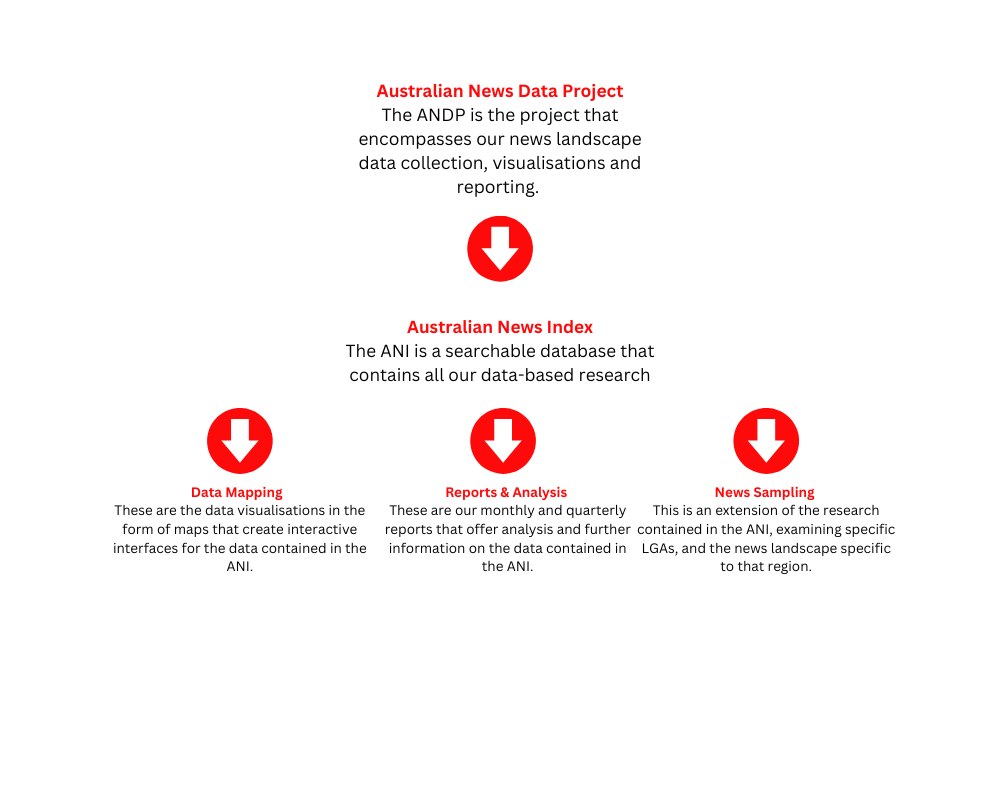The Australian News Data Project (ANDP) was a body of work designed to assess media diversity and plurality.
Data was collected about changes to news production, the coverage areas of news outlets, the ownership structures of news businesses, peak bodies in the news sector, and through sampling, the content of news publications. The project was the baseline data used by the news industry, academics and government in order to understand the state of public interest journalism in Australia.
The ANDP launched publicly in April 2020, with data beginning from 1 January 2019. It ceased at 31 December 2024. Monthly and quarterly reports remain available on PIJI’s website.
As PIJI’s role in this project has concluded, the task of measuring the state of Australia’s media landscape will now be undertaken by the Australian Communications and Media Authority.
In 2025, ACMA released interactive reports as part of its News media in Australia series, drawing on PIJI data, including the ANDP.

ANDP data is made publicly available on a Creative Commons license to ensure that it can inform research and policy to support the news media. This work is licensed under a Creative Commons Attribution-NonCommercial-ShareAlike 4.0 International License which places only a few restrictions:
CITATION: Dickson G. 2020. Australian News Data Project. Melbourne: Public Interest Journalism Initiative. <https://piji.com.au/news-mapping/australian-news-data-project/>
